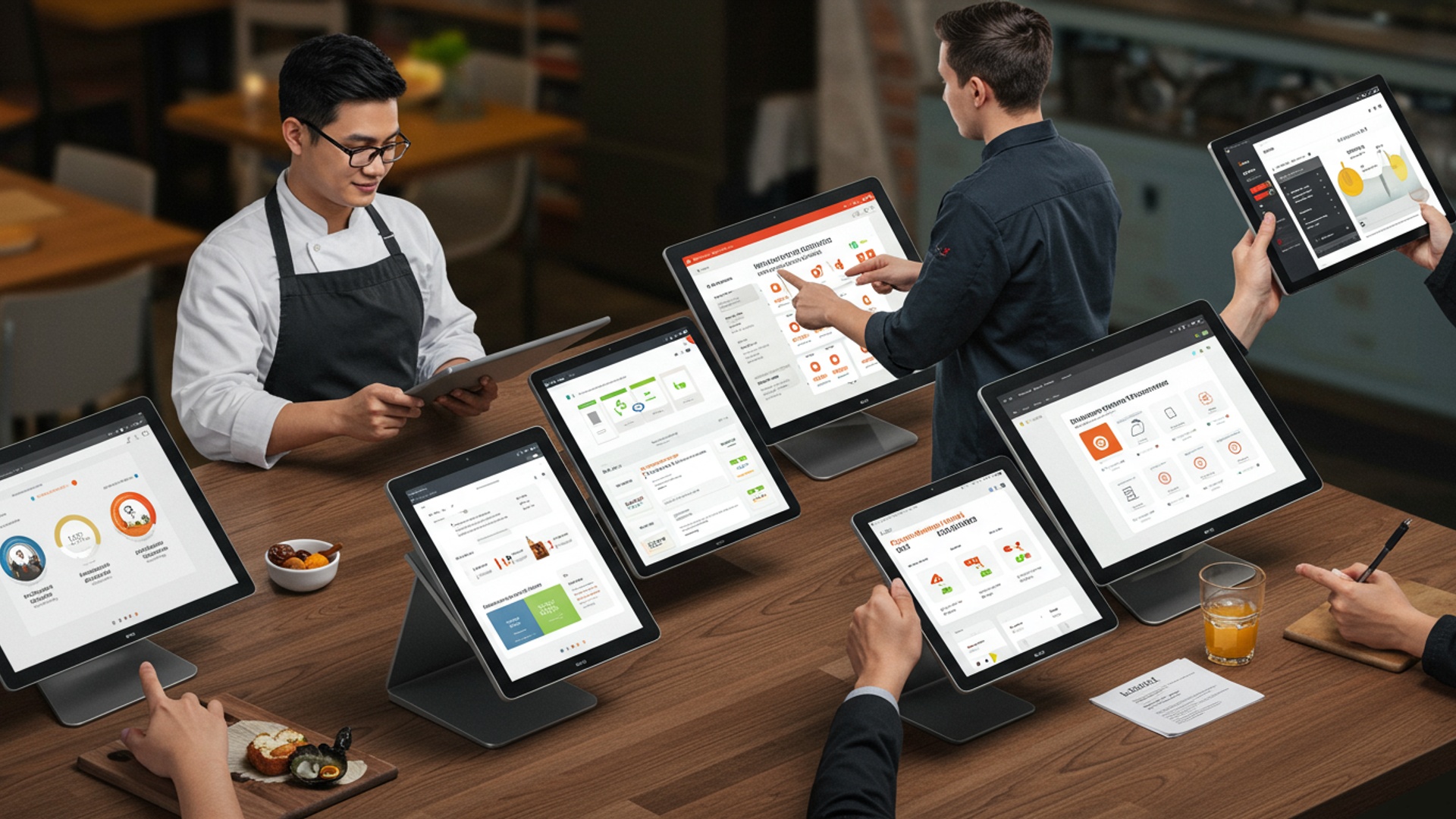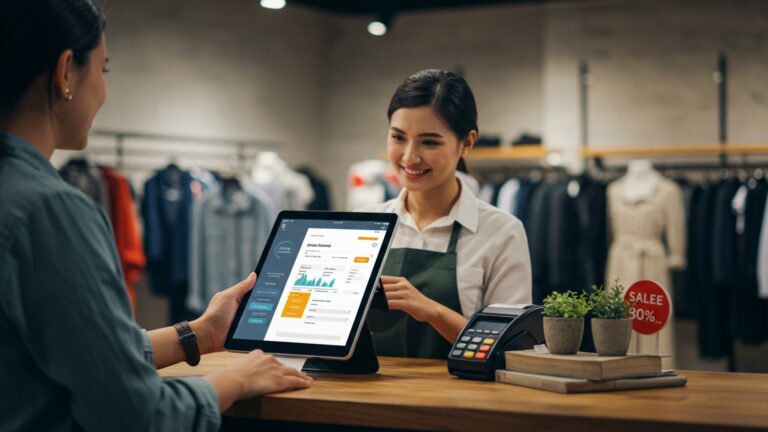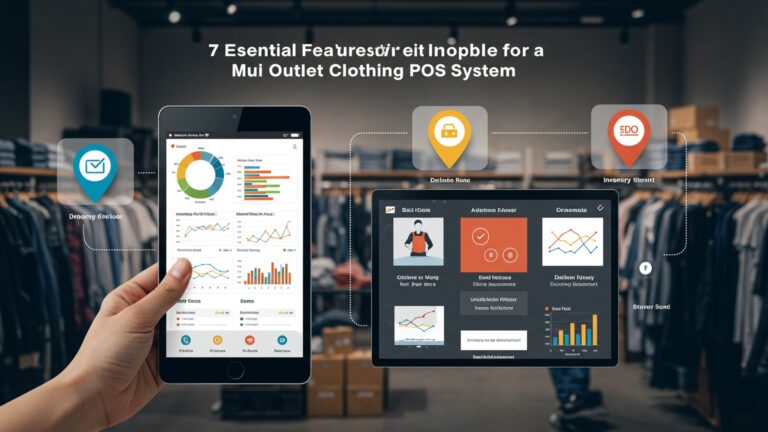10 Essential POS Software Features Every Restaurant Owner Needs to Know
In today’s fiercely competitive restaurant landscape, owners navigate complex challenges from fluctuating supply chains to an ever-evolving digital-first customer base demanding seamless experiences. The traditional cash register has long been replaced; now, robust restaurant POS software stands as the operational cornerstone, integrating critical functions far beyond simple order processing. Modern systems empower establishments with everything from integrated online ordering and contactless payment processing to sophisticated inventory tracking, real-time sales analytics. even staff management tools. Leveraging the right POS features is no longer a luxury but a strategic imperative for optimizing efficiency, enhancing guest satisfaction. ultimately securing a resilient, profitable future in this dynamic industry.

1. Intuitive Order Management and Customization
At the core of any effective Restaurant POS software lies its ability to handle orders seamlessly. This isn’t just about punching in items; it’s about a fluid process from the moment a customer places an order to its delivery to the kitchen. An intuitive interface means staff can quickly navigate menus, reducing wait times and errors.
- Key Functionality: Fast order entry, split checks, order modifications (e. g. , “no onions,” “extra cheese”), combo meal customization. the ability to transfer orders between tables or staff members.
- Why it Matters: Imagine a busy Friday night. A server needs to quickly split a check among five friends, one of whom wants their burger well-done with no pickles. another is allergic to nuts. A robust order management system allows them to do this in seconds, ensuring accuracy and customer satisfaction. Without it, the process becomes slow, error-prone. frustrating for both staff and patrons.
- Real-world Application: A server at “The Bistro” uses their tablet-based Restaurant POS software to take an order. The customer requests a dish with a specific dietary modification. The server inputs the change directly. the kitchen printer immediately receives a clear ticket with the customization highlighted, preventing miscommunications and ensuring the dish is prepared correctly.
2. Robust Inventory Management
For restaurants, inventory is cash. Effective inventory management within your Restaurant POS software is crucial for controlling costs, minimizing waste. ensuring you never run out of popular items. This feature tracks ingredients and finished dishes, providing real-time data on stock levels.
- Key Functionality: Ingredient-level tracking (e. g. , how many ounces of coffee beans are left, not just how many bags), automated reorder points, vendor management, waste tracking. recipe management to deduct ingredients accurately when a dish is sold.
- Why it Matters: Running out of a signature dish during peak hours can lead to lost sales and disappointed customers. Conversely, over-ordering perishable goods leads to spoilage and financial loss. A smart system predicts demand, tracks usage. alerts you when it’s time to reorder. It also helps identify discrepancies, like higher-than-expected ingredient usage, which could indicate waste or theft.
- Comparison:
Basic Inventory System Advanced Restaurant POS Inventory Tracks only finished goods (e. g. , number of burgers). Tracks ingredients down to the gram/ounce (e. g. , beef patties, buns, lettuce, tomatoes). Manual stock counts and reordering. Automated reorder alerts based on sales data and predefined thresholds. Limited waste tracking. Detailed waste logging, identifying patterns and areas for improvement.
3. Table and Floor Plan Management
Especially for dine-in establishments, efficient table management is vital for maximizing seating capacity and optimizing service flow. This feature provides a visual representation of your restaurant’s layout within the Restaurant POS software, allowing staff to manage tables effectively.
- Key Functionality: Interactive floor plan display, table status indicators (e. g. , seated, ordering, eating, ready for bill, dirty), table assignments, guest count tracking. reservation integration.
- Why it Matters: A host can quickly see which tables are available, which are about to open up. which servers are responsible for which sections. This prevents over-seating, reduces wait times for guests. ensures an even distribution of workload among staff. It’s a critical tool for improving the customer experience and operational efficiency during busy periods.
- Use Case: During a bustling lunch rush, the host at “Café Delight” uses the visual floor plan on their Restaurant POS software to see that Table 15 (a four-top) is just paying their bill. Table 7 (a two-top) is currently being cleaned. They can then accurately quote a wait time to new patrons and direct the next arriving party to the appropriate table as soon as it’s ready.
4. Customer Relationship Management (CRM) & Loyalty Programs
In today’s competitive landscape, fostering customer loyalty is paramount. Integrated CRM features within your Restaurant POS software allow you to collect valuable customer data and implement targeted loyalty programs, turning first-time visitors into regulars.
- Key Functionality: Customer profiles (names, contact info, order history, preferences, birthdays), loyalty point tracking, gift card management, personalized promotions. email/SMS marketing integration.
- Why it Matters: Understanding your customers helps you tailor their experience. Knowing a regular customer’s favorite dish or drink allows for personalized service. Loyalty programs encourage repeat business by rewarding frequent visits or spending. This not only boosts sales but also creates a stronger bond with your clientele, enhancing their dining experience.
- Actionable Takeaway: Implement a loyalty program where customers earn points for every dollar spent. Use the Restaurant POS software to track these points and automatically apply discounts or offer free items once a certain threshold is reached. For instance, “Pizza Palace” offers a free pizza after every 10 purchases, tracked effortlessly through their POS.
5. Comprehensive Reporting and Analytics
Data is power. a sophisticated Restaurant POS software system provides the insights needed to make informed business decisions. Robust reporting and analytics features transform raw sales data into actionable intelligence, helping owners grasp performance, identify trends. optimize operations.
- Key Functionality: Sales reports (daily, weekly, monthly, by item, by server), labor cost analysis, inventory usage reports, profit and loss statements, peak hour analysis. customer spending habits.
- Why it Matters: Are certain dishes selling better than others? Are your labor costs too high on Tuesdays? When are your busiest hours. do you have enough staff? These reports answer critical questions, allowing you to adjust staffing, refine your menu, optimize pricing. identify areas for cost reduction. For example, if a report shows that “Spicy Chicken Sandwich” sales plummet after 8 PM, you might consider adjusting your inventory or promoting it earlier in the evening.
- Technical Explanation: Many modern Restaurant POS software systems use cloud-based data storage and sophisticated algorithms to process vast amounts of transaction data. This data is then presented through user-friendly dashboards and customizable reports, often accessible remotely via a web browser or mobile app. This allows owners to monitor their business performance from anywhere at any time.
6. Employee Management and Permissions
Managing your team efficiently is just as crucial as managing your orders or inventory. A good Restaurant POS software includes features to streamline employee scheduling, time tracking. access control, ensuring smooth operations and accountability.
- Key Functionality: Time clock functionality (punch-in/punch-out), shift scheduling, role-based access permissions, tip management. performance tracking (e. g. , sales per server).
- Why it Matters: Accurate time tracking ensures correct payroll and helps manage labor costs. Role-based permissions prevent unauthorized actions (e. g. , a server shouldn’t be able to access financial reports or change menu prices). This feature enhances security, streamlines administrative tasks. helps owners grasp staff productivity, ensuring a fair and efficient work environment.
- Use Case: The manager at “Burger Haven” uses the Restaurant POS software to set specific permissions. Servers can only access order entry and payment processing, while kitchen staff can only view kitchen display system (KDS) orders. Only the manager has access to sales reports, inventory adjustments. employee payroll data, ensuring data integrity and security.
7. Integrated Online Ordering and Delivery Management
In the digital age, online ordering and delivery are no longer optional but essential. Modern Restaurant POS software seamlessly integrates with online ordering platforms and delivery services, expanding your reach and revenue streams.
- Key Functionality: Direct online ordering portal for your website, integration with third-party delivery apps (e. g. , Uber Eats, DoorDash), real-time menu synchronization, order aggregation from multiple channels. delivery driver management.
- Why it Matters: Customers expect the convenience of ordering online. An integrated system ensures that online orders flow directly into your POS and kitchen display system (KDS), just like dine-in orders. This reduces manual entry errors, streamlines operations. allows you to manage all orders from a single platform, whether they’re for pickup, dine-in, or delivery. It’s crucial for maximizing sales and meeting customer expectations in an increasingly digital world.
- Actionable Tip: Ensure your online menu is always up-to-date and reflects real-time inventory. If an item sells out in-house, your integrated Restaurant POS software should automatically remove it from your online menu to avoid customer disappointment and order cancellations.
8. Secure Payment Processing and EMV Compliance
Handling payments is a critical function. security is paramount. Your Restaurant POS software must support various payment methods and adhere to industry security standards to protect both your business and your customers.
- Key Functionality: Support for credit/debit cards (swipe, chip/EMV, contactless/NFC), mobile payments (Apple Pay, Google Pay), gift cards, split payments. end-to-end encryption for all transactions.
- Why it Matters: EMV compliance (Europay, MasterCard. Visa standards for chip cards) protects businesses from liability in case of fraudulent transactions. Offering diverse payment options caters to customer preferences, improving convenience. Secure processing builds trust and protects sensitive financial data, crucial for maintaining your restaurant’s reputation and avoiding costly data breaches.
- Definition:
EMV (Europay, MasterCard. Visa)refers to the global standard for cards equipped with computer chips and the technology used to authenticate chip-card transactions. It’s designed to reduce fraud and increase transaction security.
9. Multi-Location Management
For restaurant groups or owners planning to expand, the ability to manage multiple locations from a single platform is invaluable. This feature centralizes operations, allowing for consistent management and streamlined reporting across all establishments.
- Key Functionality: Centralized menu management, unified reporting across all locations, shared customer databases, centralized inventory oversight. remote access to each location’s performance data.
- Why it Matters: Instead of logging into separate systems for each restaurant, an owner can update menus, promotions. pricing across all locations simultaneously. They can compare performance metrics between different branches, identify best practices. address underperforming areas. This consistency in operations and data visibility is crucial for scalable growth and maintaining brand standards.
- Real-world Example: A restaurant chain owner uses their cloud-based Restaurant POS software to push a new seasonal menu item to all five of their locations with a single click. Later, they review a consolidated report showing the sales performance of that new item across all branches, allowing them to make data-driven decisions about its future.
10. Offline Mode Capability
While cloud-based Restaurant POS software offers many benefits, internet connectivity isn’t always guaranteed. An offline mode ensures that your operations can continue uninterrupted, even during network outages, preventing lost sales and operational chaos.
- Key Functionality: Ability to process orders, accept cash payments, print kitchen tickets. manage tables without an active internet connection. Data is stored locally and then synchronized with the cloud once connectivity is restored.
- Why it Matters: Imagine a sudden internet outage during your busiest dinner service. Without an offline mode, your entire operation could grind to a halt – no new orders, no kitchen tickets, no payment processing. This leads to frustrated customers, lost revenue. a chaotic environment. Offline capability provides peace of mind and business continuity, ensuring that your restaurant can always serve its customers.
- How it Works:
1. System detects internet loss. 2. Automatically switches to offline mode, storing all transaction data locally on the POS device. 3. Operations (order taking, basic payments) continue as normal. 4. Internet connection restored. 5. Locally stored data automatically syncs with the cloud server, updating all reports and central databases.
Conclusion
Understanding these ten essential POS features isn’t just about knowing what’s available; it’s about strategically leveraging them to transform your restaurant’s operations. From my own experience, integrating robust inventory tracking to prevent those frustrating “86’d” menu items to ensuring your online ordering system is flawlessly connected, the synergy between these features is what truly drives efficiency. Remember, a modern POS isn’t merely a cash register; it’s the digital backbone that lets you adapt to current trends, like the increasing demand for contactless payments and personalized guest experiences. Therefore, take this knowledge and actively assess your current system or future choices. Don’t be afraid to demand comprehensive solutions that offer real-time analytics and seamless staff management, as these are critical for staying competitive in today’s dynamic culinary landscape. Your goal shouldn’t just be to manage transactions. to optimize every aspect of your business. Embrace this technological evolution. you’ll not only streamline operations but also unlock significant growth, positioning your restaurant for enduring success.
More Articles
How to Choose the Right Restaurant POS System 10 Key Steps to Guide You
7 Essential Features Every Restaurant POS Software Must Offer for Success
10 Smart Strategies to Maximize Profit with Your Restaurant POS System
Learn 8 Common Mistakes Restaurants Make with POS Software and How to Avoid Them
How to Master Essential Restaurant POS Features for Seamless Service
FAQs
What’s the absolute must-have feature for a restaurant POS?
Definitely robust order management. You need to easily take orders, customize items with modifiers, split checks. manage tables efficiently. This is the core of your daily operations, ensuring smooth service and happy customers.
How can a POS help me stop food waste?
Look for strong inventory management. It tracks ingredients as they’re used, alerts you when stock is low. helps you identify slow-moving items. This prevents over-ordering and spoilage, saving you money and reducing waste.
Is it really worth it to get a POS with detailed reports?
Absolutely! Good reporting and analytics are like having a business consultant built-in. You can see what’s selling best, peak hours, staff performance. even profit margins, helping you make smarter decisions to boost your bottom line.
My staff turnover is high. Can a POS make employee management easier?
Yes, many POS systems include features like time clocks, scheduling tools. permissions management. This streamlines payroll, helps track tips. ensures everyone has the right access levels, making onboarding and daily tasks smoother for your team.
With everyone ordering online now, how does a POS fit into that?
A great POS will integrate seamlessly with online ordering platforms, third-party delivery services, or even have its own built-in online ordering system. This means all your orders, whether dine-in or delivery, flow into one system, preventing missed orders and simplifying kitchen operations.
What about keeping customers coming back? Does a POS help with loyalty programs?
Many modern POS systems have CRM (Customer Relationship Management) features. This lets you track customer preferences, run loyalty programs. send targeted promotions, encouraging repeat business and helping you build a loyal customer base effortlessly.
How does a POS help with menu changes and pricing?
It makes it super easy! You can update menu items, prices. descriptions across all your terminals instantly from one central place. No more reprinting menus or confusing staff when you introduce a new special or adjust a price.






